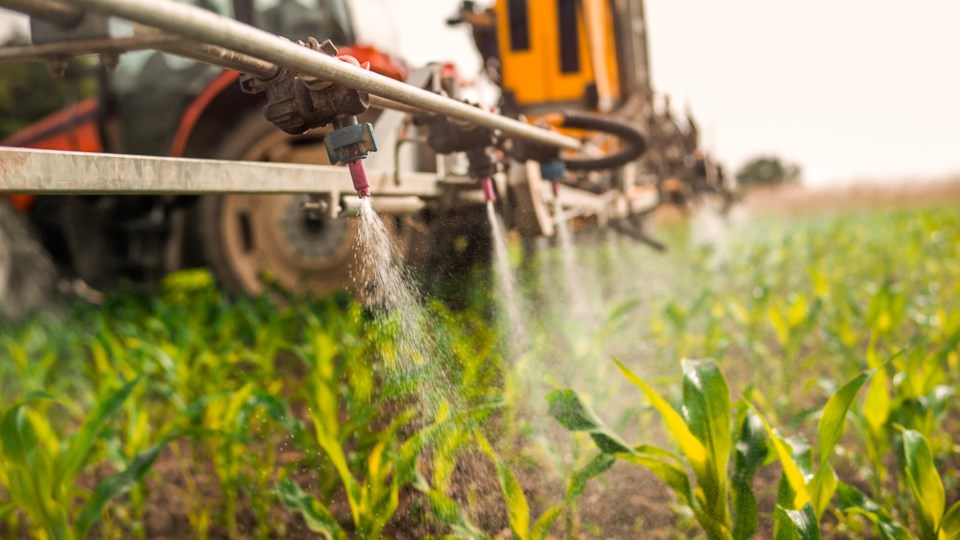THE CONVERSATION — Microplastic pollution is a global environmental problem that is ubiquitous in all environments, including , and .
Microplastics are readily found in treated wastewater sludge — also known as municipal biosolids — that eventually make their way to our agricultural soils.
of microplastic levels in Canadian municipal biosolids found that a single gram of biosolids contains hundreds of microplastic particles. This is a much greater concentration of microplastics than is typically found in air, water or soil.
Given that hundreds of thousands of tonnes of biosolids are produced every year in Canada, we need to pay close attention to the potential impacts such high levels of microplastics might have on the environment and find ways to reduce microplastic levels in Canada’s wastewater stream.
Written by academics, edited by journalists, backed by evidence.
Municipal biosolids
are produced at wastewater treatment plants by settling and stabilizing the solid fraction of the municipal wastewater inflow.
In Canada and around the world, municipal biosolids are used to improve agricultural farmland soil. This is because they are rich in nutrients needed for plant growth, such as phosphorus and nitrogen.
Municipal biosolid applications are carefully for heavy metals, nutrients and pathogens. However, guidelines for emerging contaminants, such as microplastics, are not currently available.
While current wastewater treatment plants are not explicitly designed to remove microplastics, they are nevertheless efficient at . The removed microplastics are often concentrated in the settled sludge and eventually end up in the biosolids.
Microplastics in municipal biosolids
Previous studies have shown that municipal biosolid waste is an important pathway for microplastics to enter the broader , including agricultural fields.
In collaboration with scientists from Environment and Climate Change Canada and Agriculture and Agri-Food Canada, we conducted the first pan-Canadian assessment of . We analyzed biosolid samples from 22 Canadian wastewater treatment plants across nine provinces and two biosolid-based fertilizer products.
We found hundreds of microplastic particles in every gram of biosolids. The most common type of microplastic particles we observed were microfibres, followed by small fragments. We found small amounts of glitter and foam pieces too.
Microplastics in municipal biosolids. A-C: Processed biosolid samples; D-F: Assortment of microplastic particles in biosolids. (Jesse Vermaire), Author provided
Microplastic concentrations in municipal biosolids are substantially higher than other environmental networks in Canada like , and . This provides further evidence that microplastics are concentrated in biosolids produced at wastewater treatment plants.
Reducing microplastics
Wastewater treatment plants are well-equipped to remove large plastics like bottle caps and plastic bags from municipal wastewater. However, microplastic particles are so small they can’t be caught by current treatment infrastructure, so they end up concentrating in wastewater sludge.
As wastewater streams concentrate microplastics, they also offer an opportunity to reduce the plastic pollution that is entering the environment. While researchers across Canada are working to find insights on the short- and long-term ecological consequences of microplastic pollution on soil ecosystems, one solution is already clear.
Microplastics can be reduced at sources via systematic reductions in the use of single-use plastics, washing clothing with synthetic fibre less frequently and removing microfibres using . These approaches will help minimize the amount of microplastics that get into the wastewater stream and, ultimately, into the broader terrestrial and aquatic environments.
Building new technologies at our wastewater treatment plants to remove microplastics through physical or chemical means should also be explored.
We need to better understand the impact of high concentrations of microplastic on agro-ecosystems where biosolids are applied, including its impacts on . We also need to start building national guidelines for microplastic levels in biosolids and agricultural soils.
Authors:
is a Postdoctoral Fellow, Department of Geography and Environmental Studies at Carleton University. Sivarajah receives funding from Carleton University, Mount Allison University and Natural Sciences and Engineering Research Council of Canada. The research was funded through Environment and Climate Change Canada, Agriculture and Agri-Food Canada and the Natural Sciences and Engineering Research Council of Canada.
is an Associate Professor, Institute of Environmental Science, Carleton University. Vermaire receives funding from the Natural Sciences and Engineering Research Council of Canada, Northern Contaminants Program, Environment and Climate Change Canada, Mitacs and the Canadian Foundation for Innovation. He is affiliated with Carleton University and a volunteer board member with Deep Blue Cleanup.
You can no longer count on social media to deliver important news to you. Keep your news a touch away by bookmarking SASKTODAY.ca's homepage at this link.
Here's why you should bookmark your favourites.




